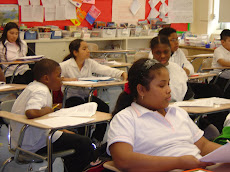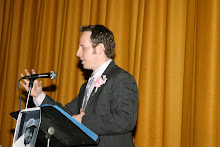Dear JHS 13 Community,
There are 25 School Days until the ELA exam and 30 School Days until the Math exam. The urgency to prepare our students for these exams is higher than it has ever been. Both mid-year assessments showed growth in a few classes but not all of them. To ensure our students are ready for the exam, we need to be taking advantage of every second, minute, period, and program in our school.
We set up the Saturday Academy to support preparation for the exams. We have only been pulling in about 50 students. Our goal is 100 students. We will continue to invest efforts into the recruitment so our goal is met. In fact, students with low attendance will be offered Saturday Academy days to reduce the number of absences he or she currently has. This could be the difference maker in catching these students up on the instruction they have been missing but also increase their chances of passing the state exams.
Everyone can contribute to improving our student results by investing efforts into several initiatives. The first is the data driven instruction. By regularly identifying the areas where our students need the most work, we can better prepare them for their state exams. This information can dictate how much time we work on specific content and can also let us know if we need to thread the topics back into the curriculum or input daily procedures to reinforce particular skills. If teachers are using their own intuition to decide how much time should be devoted to a specific topic in the curriculum, rather than clear evidence, this person or these individuals are taking a huge thoughtless risk in sabotaging student achievement. The support on how to do this is readily available so if you are struggling to investigate the status of your students either ask a colleague or an administrator.
The second is to develop as many opportunities during the school day or week to have students read and write. It could range between short response questions using the RAFT method or essays. Regardless, students need to improve their ability to convert their thoughts into written words. This comes from repeated opportunities in classes throughout the day and constant feedback on how to improve. This will help students perform better on both the math and ELA state exams.
The third is student feedback. If you are not giving back at least two to three assignments per week or posting assignments on your bulletin board with teacher feedback, then you are leaving the students to figure out how to improve on their own. Obviously, leaving it to a 11 to 14 year old child to find out on their own what is the correct way to critically think, analyze, predict, etc…then we are setting them up for failure. Students need to be receiving clear and thorough feedback as much as possible. This should not be only left to “x’s” and checks letting them know if an answer is correct or wrong. There should be written feedback or the use of a rubric to communicate areas of success and how the student can improve.
Again, the urgency to prepare our students for the state exams is now. If you are not investing your time into better supporting our children, then you need to begin as soon as possible. This is not a task only for ELA and Math teachers. It begins with parents making sure their children are reading and writing at home. It continues with any teacher of any subject using data to drive instruction, providing opportunities to read and write during class, and giving students as much feedback as possible.
Sincerely,
Jacob T. Michelman
Principal
CHECKING IN WITH THE SCHOOL GOALS
20% INCREASE OF STUDENTS MEETING PROFICIENCY IN ELA AND MATH
The latest exam results from the ELA and Math mock exams will be our last clear picture of what our students know. It is our responsibility to take this information and address the areas our students need to improve. We need to prioritize according to the expectations of the state exams. There are certain skills and content which will be stressed more than others. It does not make sense to reiterate skills and content that will barely be covered on the state exams. We have to use our time wisely. Since we are unable to go over every single standard in a short amount of time, we need to identify our prioritize according to areas of weakness and the expectations of the state exam.
The exam this Thursday will be the last chance for our students to get a practice testing environment before the actual test. It is important for us to identify students who still struggle to complete the test in the allocated time. We can explore ways to create more time for the student or get the student support in using his or her time more efficiently.
92% ATTENDANCE
On February 18th, we had our highest percentage of students in school the day before a break. We reached an all time high of 92%. This was a huge achievement for the attendance committee. On February 28th, the first day after our break, we reached 91%. Again, it was a huge achievement for our school since we have invested many meetings and efforts into increasing attendance on days before and after break. Unfortunately, last week, our attendance dropped ranging between 87 and 91 percent.
We have been setting up contracts, meeting with students, and referring families to Attendance Court to combat excessive absences. We will continue with these efforts when students have over 13 absences. We will need the community to further promote attendance by urging students to get to school on time and to make students feel welcomed when they return from an absence. We will not be able to improve our daily percentage if we do not work as a community to improve our attendance. We are currently at 89.2%. This is 2.8% below our goal for the year. Please take the time to speak to a student who struggles to come to school.
CITY-WIDE SURVEY ACHIEVING “ABOVE AVERAGE OR HIGHER” ON ALL 12 CATEGORIES
The School Improvement Team has been working hard to assess our current status with communication. It has been a very interesting process. We have identified every constituent and who they speak to in our community. To further the process, we have isolated the methods of communication and are currently assessing whether or not they work. It has been incredibly informative, as we have been relying on methods that have proven time and time again to not work. For instance, e-mail is the most efficient way to communicate but not everybody checks their e-mail each week. After exploring all options, it was clear that memos are still the best way to communicate with staff. After coming to this realization, we will be implementing a weekly memo for staff to sign for to make sure all logistics and important information is shared with staff. By the time the process is over, we will have a list of methods of communication for all constituents in our community. All other methods can still be used but will not be recognized as a set way to share information.
EXPANDING INTERVENTIONS TO PROVIDE ADDITIONAL SUPPORT FOR 15% OF OUR POPULATION
The school continues to struggle to get teachers to refer students to the Child Study Team. There are a number of teachers who have removed or disciplined the same child repeatedly and have not sought support from the Child Study Team to either get these individuals more services or to gather strategies for the teacher to progress with the student. We will begin using Teacherease to identify teachers who remove the same child repeatedly and flag these individuals for administrative meetings and mandate Child Study Referrals. We are hoping for a thorough exploration into interventions to increase class time for the student rather than a complete dependency on a discipline system resulting in dismal instructional time for the child.
We have been completing the Functional Behavior Assessments and Behavior Improvement Plans to the 20 students with the most reported discipline issues. The Child Study Team received professional development on Behavior Intervention Plans. This work will improve the relationship of specific students with staff. By identifying and applying best practices with particular students, we will help improve the academic progression of these individuals.
Subscribe to:
Post Comments (Atom)





No comments:
Post a Comment